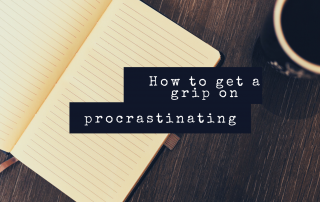Worrying Versus Problem-Solving:
Many people believe that worrying and problem-solving are the same thing, and that worrying is very beneficial. It’s called having ‘positive beliefs about worry’.
But the truth is, worrying and problem-solving are two very different things. In this article, we’re going to take a closer look at the difference between worrying and problem-solving.
I’m also going to share with you my ‘6-Step, Problem-Solving System’ to effectively help you solve your day-to-day problems, and reduce your need to worry about these problems. So keep reading to the end!
What is ‘Worrying’?
Worrying is a negative thought process. When we worry, we think of the worst case scenarios and all the possible problems that might happen in the future. These images and thoughts go round and round in our heads. We may try to imagine what we would do if this terrible thing ever happened, but often we are so anxious that we can’t think clearly, and so can’t find any real solutions. Instead, we just dwell on our worst fears.
Worrying makes us anticipate and fear something that is typically unlikely to happen in the future, yet leaves us unprepared and without a plan to deal with this unlikely occurrence even if it did happen.
*FREE *Understanding Worry* Workshop:
What is ‘Problem-Solving’?
Problem-solving is very different. It is a constructive thought process focused on how we can effectively deal with a problem at hand. It involves identifying what the problem is and thinking of possible ways of dealing with the problem. We then choose which of these suggestions seem the best solutions and examine the pros and cons for each.
Based on our evaluation of the solutions, we can then develop a plan of how best to deal with the situation by using one or more of the strategies we have thought of.
The next step is to put this plan into place. At the end of this process, we step back and evaluate how well we have done in dealing with the problem.
Can you now see how worrying can be an unhelpful, exhausting process, which focuses on things that haven’t happened?
In contrast, problem-solving is a practical and helpful process, which focuses on problems at hand that need to be dealt with by devising a clear plan of action to tackle these problems.
Worrying isn’t useful to us, but learning a skill like problem-solving can be life-changing.
The invaluable skill of problem-solving:
Is There A Problem?
This is something you need to ask yourself before launching into problem-solving. Is there actually a problem that needs solving? Whatever it is you are worrying about, ask yourself:
Is it a real problem I am concerned about?
Is the problem something happening now?
Is the problem something I have some control over?
If the problem you are worried about is an unrealistic and unlikely prediction of the future, of which you have little control over, then although it might appear that the problem is “real”, it is not an actual problem that requires action.
However, if it is a real problem in the here-and-now that you can do something about, then using problem-solving strategies is the best way to deal with the problem.
Real Problems and Worries (where you CAN use problem-solving skills):
Unsolvable problems (when you have little or no control over these worries):
Mastery Of Worry- 8 Weeks Program
If you struggle with worry, I offer 8-Weeks ‘Mastery Of Worry Program’ at https://anxietycurse.com/mastery-of-worry/
Use my ‘6-Step Problem Solving System’ to effectively problem-solve:
Further articles you may like:
1606, 2023
708, 2022
1707, 2022
Anxiety And Procrastination At Work
Can Anxiety cause Procrastination? Absolutely. Anxiety and Low Mood can both result in Procrastination at work. In this article, I'm going to take a closer look at what Procrastination is, and how to help yourself if you struggle with Anxiety AND procrastination. Let's start with Procrastination: First of all, people mistake procrastination
2606, 2022
405, 2022
Assertiveness Mastery: 9 Effective Steps to Improve Assertiveness Skills and Boost Self-Confidence
In today's fast-paced world, mastering assertiveness skills has become an essential tool for personal and professional growth. It's not just about being confident; it's about communicating your needs and respecting others in a balanced and healthy way. I've recently launched a new book, 'Building Assertive Mindset: A Guide to
1204, 2022




